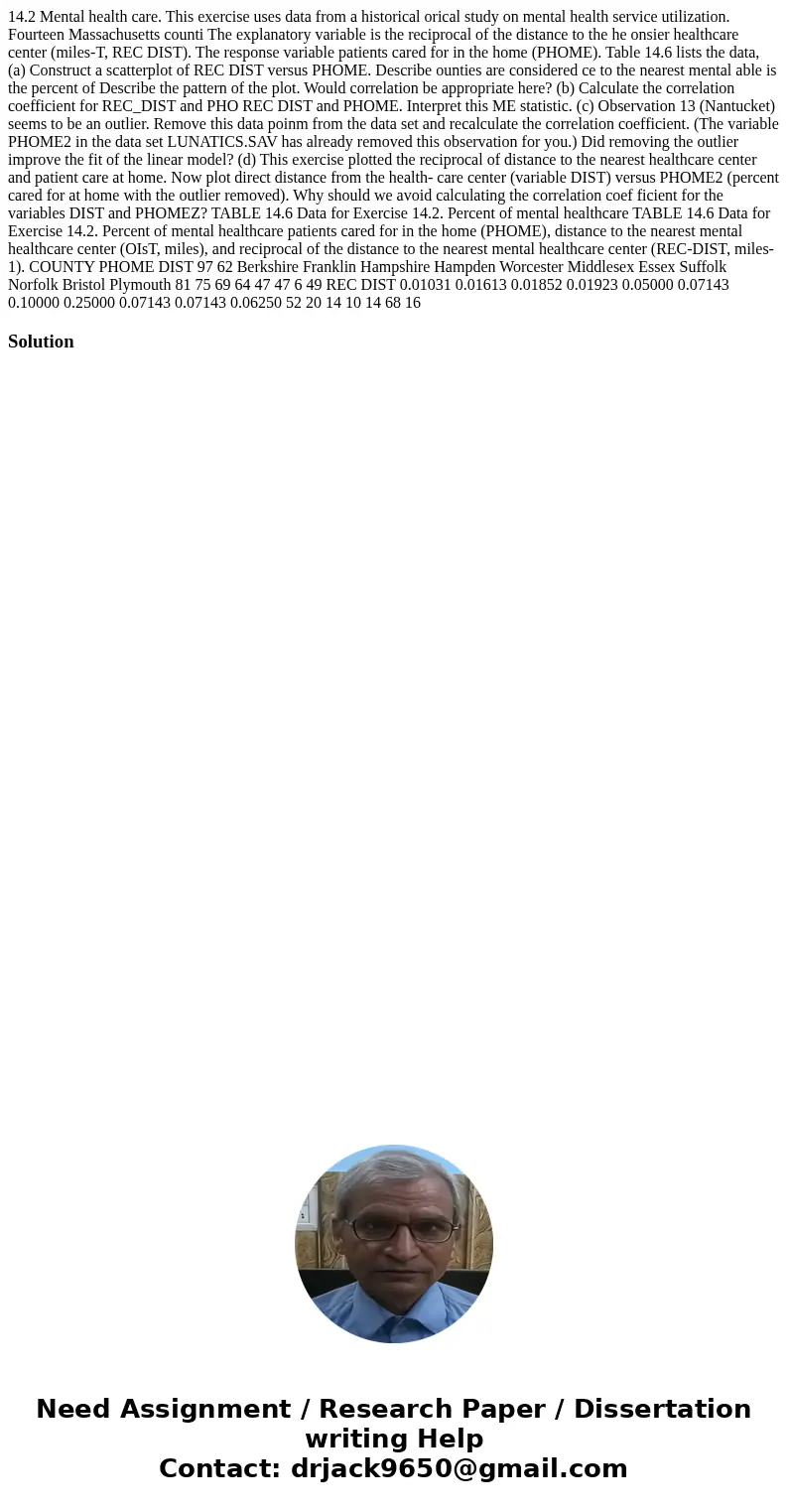142 Mental health care This exercise uses data from a histor
14.2 Mental health care. This exercise uses data from a historical orical study on mental health service utilization. Fourteen Massachusetts counti The explanatory variable is the reciprocal of the distance to the he onsier healthcare center (miles-T, REC DIST). The response variable patients cared for in the home (PHOME). Table 14.6 lists the data, (a) Construct a scatterplot of REC DIST versus PHOME. Describe ounties are considered ce to the nearest mental able is the percent of Describe the pattern of the plot. Would correlation be appropriate here? (b) Calculate the correlation coefficient for REC_DIST and PHO REC DIST and PHOME. Interpret this ME statistic. (c) Observation 13 (Nantucket) seems to be an outlier. Remove this data poinm from the data set and recalculate the correlation coefficient. (The variable PHOME2 in the data set LUNATICS.SAV has already removed this observation for you.) Did removing the outlier improve the fit of the linear model? (d) This exercise plotted the reciprocal of distance to the nearest healthcare center and patient care at home. Now plot direct distance from the health- care center (variable DIST) versus PHOME2 (percent cared for at home with the outlier removed). Why should we avoid calculating the correlation coef ficient for the variables DIST and PHOMEZ? TABLE 14.6 Data for Exercise 14.2. Percent of mental healthcare TABLE 14.6 Data for Exercise 14.2. Percent of mental healthcare patients cared for in the home (PHOME), distance to the nearest mental healthcare center (OIsT, miles), and reciprocal of the distance to the nearest mental healthcare center (REC-DIST, miles-1). COUNTY PHOME DIST 97 62 Berkshire Franklin Hampshire Hampden Worcester Middlesex Essex Suffolk Norfolk Bristol Plymouth 81 75 69 64 47 47 6 49 REC DIST 0.01031 0.01613 0.01852 0.01923 0.05000 0.07143 0.10000 0.25000 0.07143 0.07143 0.06250 52 20 14 10 14 68 16 
Solution

 Homework Sourse
Homework Sourse